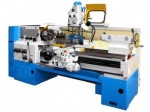Cold fusion reactor verified by third-party researchers, seems to have 1 million times the energy density of gasoline
Опубликовано 2014-12-01 04:00
EXTREME.TECH Cold fusion reactor verified by third-party researchers, seems to have 1 million times the energy density of gasoline: http://www.extremetech.com/extreme/191754-cold-fusion-reactor-verified-by-third-party-researchers-seems-to-have-1-million-times-the-energy-density-of-gasoline
Andrea Rossi’s E-Cat — the device that purports to use cold fusion to generate massive amounts of cheap, green energy – has been verified by third-party researchers, according to a new 54-page report. The researchers observed a small E-Cat over 32 days, where it produced net energy of 1.5 megawatt-hours, or “far more than can be obtained from any known chemical sources in the small reactor volume.” The researchers were also allowed to analyze the fuel before and after the 32-day run, noting that the isotopes in the spent fuel could only have been obtained by “nuclear reactions” — a conclusion that boggles the researchers: “… It is of course very hard to comprehend how these fusion processes can take place in the fuel compound at low energies.”
This new report [PDF] on the E-Cat was carried out by six (reputable) researchers from Italy and Sweden. While the new E-Cat looks very different from previous iterations, the researchers say that it uses the same “hydrogen-loaded nickel” and additives (most notably lithium) as a fuel. The device’s inventor, Andrea Rossi, claims that the E-Cat uses cold fusion — low-energy nuclear reactions, LENR — to fuse nickel and hydrogen atoms into copper, releasing oodles of energy. The researchers, analyzing the fuel before and after the 32-day burn, note that there is an isotope shift from a “natural” mix of Nickel-58/Nickel-60 to almost entirely Nickel-62 — a reaction that, the researchers say, cannot occur without nuclear reactions (i.e. fusion). The researchers say there is just 1 gram of fuel inside the E-Cat. For more info about the science/chemistry behind LENR, read our previous story about Rossi’s E-Cat.
The researchers are very careful about not actually saying that cold fusion/LENR is the source of the E-Cat’s energy, instead merely saying that an “unknown reaction” is at work. In serious scientific circles, LENR is still a bit of a joke/taboo topic. The paper is actually somewhat comical in this regard: The researchers really try to work out how the E-Cat produces so much darn energy — and they conclude that fusion is the only answer — but then they reel it all back in by adding: “The reaction speculation above should only be considered as an example of reasoning and not a serious conjecture.”
Anyway, now that we’ve got the necessary cynicism/scrutiny out of the way, let’s get down to what everyone’s really interested in: The utterly insane amounts of energy produced by the E-Cat. In the table below you can see some figures from the 32-day test. The most important figures are on the right hand side: a COP (coefficient of performance) of up to 3.74, and net power production of 2,373 watts. Remember that this is a small device that produced these kinds of figures for 32 days straight. Total energy obtained over 32 days was 1.5 MWh.
Now read: 500MW from half a gram of hydrogen: The hunt for fusion power heats up
|
Оставлять комментарии могут только зарегистрированные пользователи. Войдите в систему используя свою учетную запись на сайте: |
||
 4 New Concepts in Technologies*
4 New Concepts in Technologies*